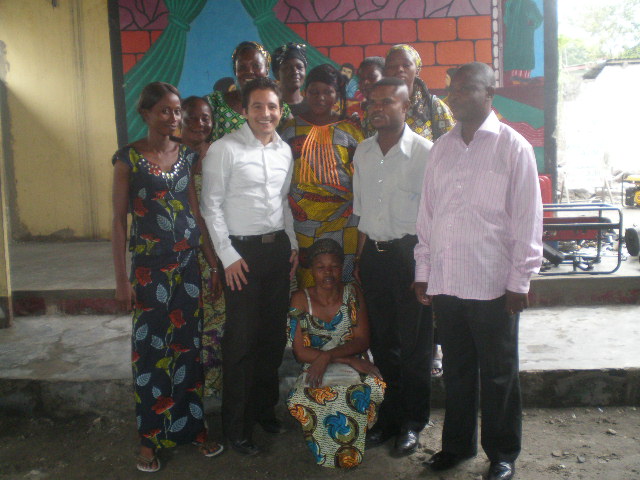
By John Soleanicov, KF8 DRC
I could feel the beads of sweat rolling down my face. Sitting in a makeshift police station under a tent, I was surrounded by three Congolese policemen and my accuser, a young man that could not have been past his mid twenties. My crime: videotaping in public.
'As I was returning from a group visit with Hope’s Kiva Coordinator, Robert, I wanted to capture the infrastructure realities of Kinshasa (more on this in a later post). The young man noticed I was taping and began to follow our motorcycle. You can actually hear him in the video.
Once we arrived at our destination, he made a big scandal, refusing to let us leave peacefully. Since he was clearly not a police officer, Robert suggested going to a nearby police station to settle the matter “officially.” Having heard horror stories of the notorious corruption of Congolese police, I feared the confiscation of my camera, passport, or worse.
After an hour of discussion, the police decided that I had done nothing wrong. Surprisingly, we were allowed to leave freely. While the overall experience was quite frightening, it did provide me with several invaluable lessons:
Not all Congolese police are corrupt. I was shocked by the correctness of the police officers and happy that I trusted Robert’s instinct. While corruption in their ranks continues to be a problem, perhaps this is a sign that reform is in the works.
Photography is taboo in the DRC. Before coming to Kinshasa, I had read that photography of government buildings was illegal. However, aversion to cameras appears to be far more ingrained in Congolese society. After years of repression under the Mobutu regime, photography has come to be seen as a tool used by those seeking to usurp the state or to report dissident activities.
This last point, of course, has implications for Kiva. If you look through loans posted by Hope DRC, you will sometimes notice people hiding from or trying to avoid the camera. One of the big challenges of implementing Kiva in the DRC is convincing people to have their pictures taken. Once the reason for the picture is explained, however, people seem far more receptive to the idea. (Note: Hope DRC is in the process of including a client waiver in all their group loan contracts, which will inform borrowers about the use of Kiva photos).
In one case, one of the younger group members actually had his own digital camera (used for his business). Once the group warmed to the idea of Kiva, everyone suddenly wanted a picture with the mundele (the word for white person in Lingali, the local language of Kinshasa).

The Mundele
As with many of the challenges of DRC, there are signs of progress and change – one photo, and one Kiva loan, at a time.
To see all DRC loans fundraising on Kiva, click here. You can also join the Lend DRC lending team here. John Soleanicov is serving as a Kiva Fellow with Hope DRC (KF8).
/>













